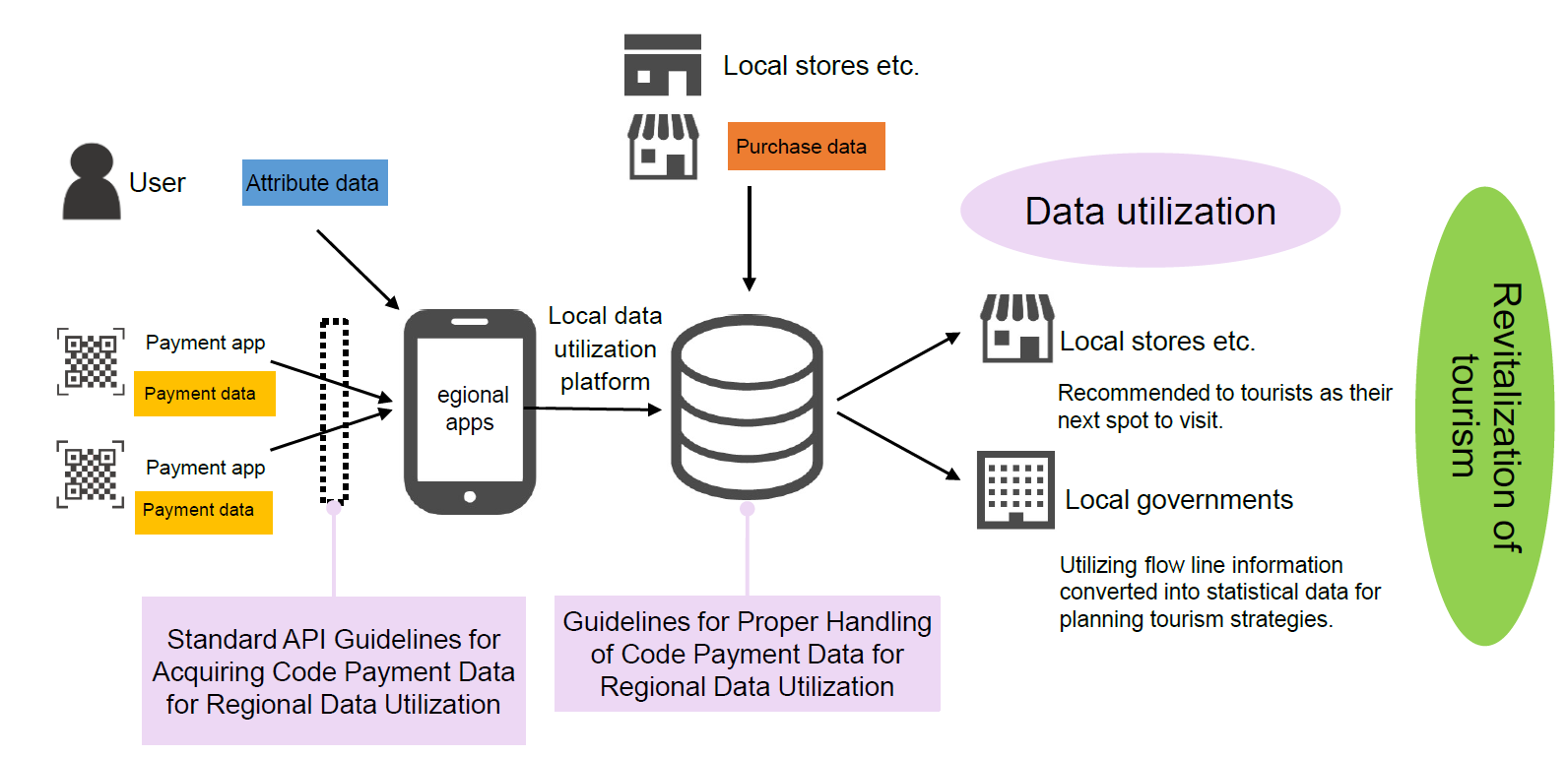April 27, 2021 Announcement of Results of FY 2020 Survey on Regional Utilization of Payment Data
To promote the regional utilization of payment data generated from cashless payments, the Ministry of Internal Affairs and Communications conducted a fiscal 2020 survey on the regional utilization of payment data.
Recently, MIC has completed a report summarizing the implementation details of the project specified below. MIC has also completed “Standard API Guidelines for Acquiring Code Payment data for Regional Data Utilization” and “Guidelines for Proper Handling of Code Payment Information for Regional Data Utilization.” Accordingly, MIC will open them to the public.
In anticipation of the development of the cashless society, MIC will support to solve regional issues and revitalize regional economies utilizing payment data in as many regions as possible by disseminating the results of this project.
1. Background
With an increase in cashless payments, expectations are rising to revitalize local economies and solve problems by utilizing payment data. On the other hand, a standard mechanism for sharing data between payment providers and retail stores has not been developed. Settlement companies, retail stores, etc. hold payment data separately. Therefore, at present, the practical use of payment data, etc. is not sufficiently made regionally. Therefore, MIC conducted the fiscal 2020 survey on the regional utilization of payment data to promote the regional utilization of payment data.
2. Implementation content
MIC implemented a model project in three regions (Fukushima’s Aizuwakamatsu City, Saitama’s Chichibu area, and Wakayama’s Tanabe City) to solve regional issues by utilizing payment data, etc. and conducted a study to formulate guidelines for data acquisition and handling.
1. Outline of the model project (Tourism revitalization efforts in Chichibu area*1)

2. Ideal state for which the model project aimed (Tourism revitalization efforts in Chichibu area*2)
| Theme | Encouraging people who visit tourist attractions to visit nearby stores, thus leading to regional revitalization quickly. |
|---|---|
| Implementation content | Aggregating and analyzing tourist attribute data acquired through regional apps and tourist payment data acquired at tourist destinations, thus recommending nearby stores that are likely to be of interest to each tourist. |
| Expected effect | Revitalizing entire tourist areas by dispersing the flow of tourists. Utilizing statistical data based on tourist flow line data for planning tourism strategies. |
- *1
A model project example. In this project, MIC set unique themes in Fukushima’s Aizuwakamatsu City, Saitama’s Chichibu area, and Wakayama’s Tanabe City and implemented the model project.
- *2
In the model project, JPQR (a unified QR code for payment), formulated by the Payments Japan Association and promoted by MIC, was used as a cashless means used by participants.
- *
The published material is in Japanese only.
Contact
For further information about this press release, please fill in the inquiry form and submit it to MIC on the website
https://www.soumu.go.jp/common/english_opinions.html
International Policy Division, Global Strategy Bureau, MIC
TEL: +81 3 5253 5920
FAX: +81 3 5253 5924
